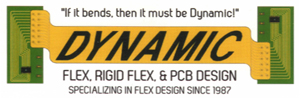PCB Board Design What Is It And What Is It For?
What is a printed circuit board design?
What is PCB in electronics? A printed circuit board or PCB board or card, supports and connects electronic components, with copper paths or tracks so that a circuit or product works as desired. It is the core or heart of the vast majority of technology products (a cell phone, a computer, an industrial or educational robot, a car alarm, a fruit sorting machine, etc.).
What use is a PCB board design?
A PCB board design is widely used when working in electronic, mechatronics, electrical design, also in research, production and manufacturing, development of innovative products. Currently, all products (electronic or not) have electronic cards with different shapes, characteristics, sizes, components and colors. In any context, ignoring, undervaluing or leaving the plate in electronics for later makes for the failure in the design, manufacturing or marketing of a product for a company.
The entire engineering team (design, hardware, software, mechanical design, mechatronics, electrical, firmware), or industrial, administrative, financial, marketing, and warranty design, depends on a prototype, production or batch that works. The company then works to sell the product (regardless of whether it is electronic or not) leading to the financial success or failure of the product.
PCB properties
Printed circuits have different electrical, thermal and physical properties, which determine their behavior:
- Electrical: The dielectric permittivity constant (Er) determines the behavior (propagation) of a high frequency signal and its electromagnetic fields, in a medium such as fiberglass.
- Thermal: The glass transition temperature is the temperature at which fiberglass loses its properties and becomes as brittle as glass, expanding exponentially. This happens after the specified temperature TG. It can also undergo expansion in the Z-axis due to temperature, in terms of percentage.
- Physical: the physical property involves expansion on the X and Y-axis in a proportion of parts per million due to temperature. The PCB can absorb a certain amount of moisture, as well.
A designer chooses the PCB material according to the temperature range it will be used at (and whether it will have to endure high temperatures). It will be used in high-frequency applications, and must have dimensional stability, and mechanical rigidity if it is to be used in a multilayer design. The above depends on the application and has an impact on the costs, reliability, maintenance and repair of the product.
IPC standards help classify the product type, its complexity, performance, and production aspects. For this reason all parties (customer, user, designer, student, researcher, manufacturer), comply with the standards, communicate, speak the same language regarding design, manufacturing and delivery specifications. The aim is to deliver a product to the client’s satisfaction, as promised at the outset, or according to the contract or design requirements.
Classification of electronic products
Electronic products, their printed circuits and assembled circuits are classified depending on the end use. All products are not created equal. Classification relates to increased complexity, sophistication, functional performance requirements, and the frequency of testing and inspection. The user or customer of the printed circuit board design should decide on the class to which their product belongs before moving forward.
IPC Performance Standards for PCB
Producibility depends on the complexity of the design and the precision required in production. The IPC provides three levels of producibility related to the characteristics of the card, its tolerances, measurements, assembly, testing, etc. What level of producibility the client chooses impacts the sophistication of tools, materials, and processes used, and of course th manufacturing costs, as well. This is important because it means increased product complexity and reliability are related to increased costs.
These levels are not a design requirement, but a communication method, between the user, designer and electronic manufacturer, of the degree of difficulty of manufacturing a PCB characteristic or assembly. However, the requirements for precision, performance, track density, equipment, assembly and testing can affect and indeed determine how producible the design is.
